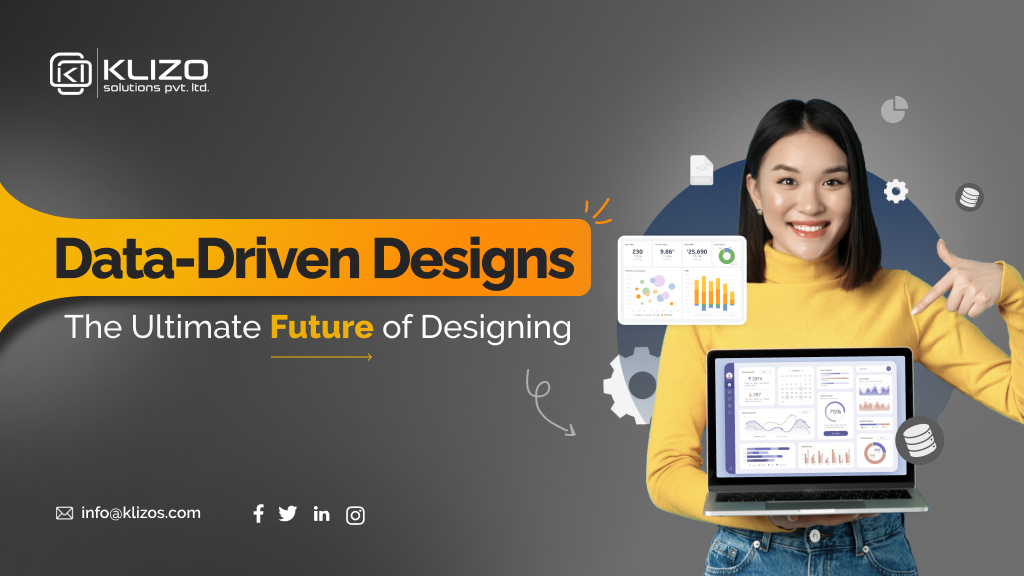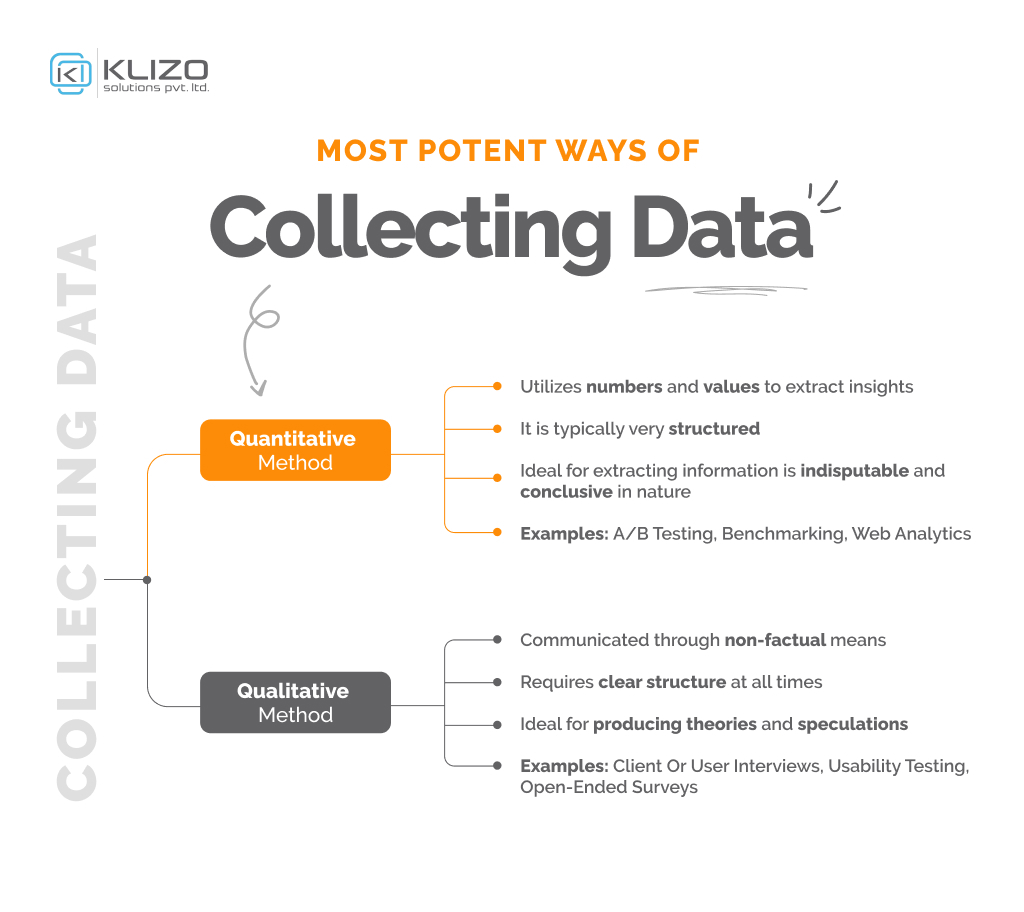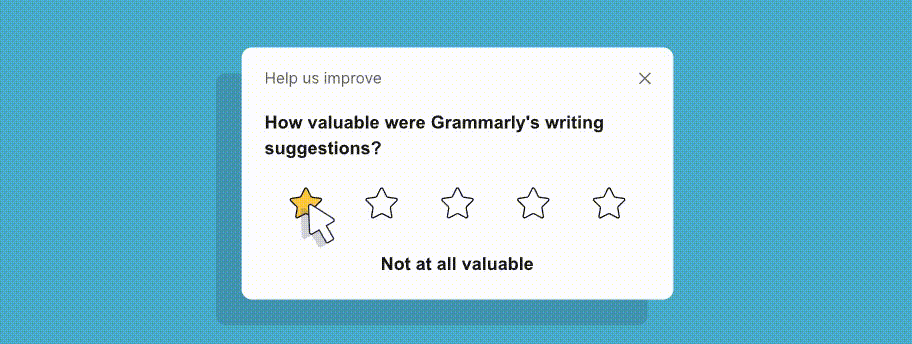


Designs have always been considered to be a form of art.
But what if you can add some science to it?
Well, that’s what data driven design is all about, mixing some science with some art to fulfill the needs of today’s tech-driven users.
Yes, this modern design trend is about collecting and analyzing real user data to improve your website design in a way that enhances your user experience, achieves increased audience engagement, and boosts conversion rates.
But not everyone understands why data-driven UX design is so important in creating digital projects these days. Some even are still clueless about it!
No matter which ‘some’ you belong to, if you want to know about data driven designing and what makes it so important these days, then this article is all you need to go through.
For those who are wondering what data-driven design is, the term refers to a design approach where the designs are primarily driven or informed by real user data. In simpler words, in a design driven by data, the design-related decisions are influenced by data.

The very purpose of letting data take control of design decisions is to develop a better understanding of the users and prioritize their needs and requirements through observable tests.
Informed design decisions in a website or app simply help in creating a more pleasing and satisfying user experience.
Take Virgin America as one of the data driven design examples that did the A/B testing and redesigned its website into a new, more responsive one. And guess what? The results were astonishing. They witnessed almost 14% increases in their conversion rates, faster customer bookings, and almost 20% lesser support calls.

If you think this example is too old, then what about Netflix?
This streaming service uses data to offer personalized recommendations, update thumbnails, and modify content. They analyze user behavior, preferences, ratings, and feedback and experiment with different variations of their interface designs and features to find the optimal ones.
And not only Netflix; there are other data driven design examples. Apps like Slack, Canva, Lyft, and Grammarly also collect in-app feedback for enhancing their app UX designs.

To determine the most impactful way of offering optimal user experience through a data driven UX design, different types of data are required, i.e., quantitative data and qualitative data.
Once the data is collected, the next step is to analyze the collected data.
While quantitative data like UX and design analytics provide an idea about what is going on in the app or the website, qualitative data such as the data collected from user interviews helps to understand why users are doing what they are doing.
Not to mention, user behavior-related data plays a crucial role in forming UX theory and web design psychology.
Once both quantitative and qualitative data are collected, they are continuously analyzed to identify data trends and outliers, and changes are made in the design and layout accordingly.
Ages ago, the Italian polymath genius Leonardo da Vinci once said, “Everything connects to everything.” And this is still true today, especially for websites that use data to design and boost their ROI.
Yes, data driven designs do help in maximizing the return on investment(ROI).
A design driven by data may not be a panacea to every illness associated with conversion. But it is indeed a part of a systematic, more effective, and high-performing way of ensuring better results from your UI-UX design efforts.
A user data driven website design ensures that users have a great experience when they visit the site. And everyone knows that the better the UX, the greater the chances of more website traffic and higher online conversion.
Studies show that 88% of consumers are less likely to return to a site where they had a bad experience. So, anything related to web designing that improves customer user experience is meant to boost ROI.
Designing your website in a data driven way is simply a smarter approach to exploring a website’s full potential to convert.
Data informed design is simply a smarter and new way of approaching a website design where valuable resources and time aren’t wasted over determining which may work for the users or may not.
Usually, it begins from either a small launch-pad website or an existing website from where research and tracking are conducted on how users are interacting with it. Based on the accumulated real user data, further changes or new pages are added to the website.

The way design driven by data works is changing what we used to think about our websites. The moment designing something keeping the information about users in mind became possible; the very moment using websites to their full capacity in driving traffic and converting leads became possible.
The question isn’t why you should give data driven design architecture more importance. The real question is, why should we not do so?
If the data informed designing approach helps create a website that reflects and reciprocates to the needs of modern-day users, why should we not appreciate and implement it?
Here, we have summed up some of the major perks of this unique design approach to help you better relate to its growing significance!
Most of the time, a website that is not based on user analytics requires changes and modifications that lead to an unexpected price rise or drain on the budget. However, with a data-driven approach, a web design becomes more practical, quickly manageable, and beneficial in the long run. As your website will receive continuous updates and remain fresh, you need to worry about the sudden huge cost of completely revamping it.

Striking a perfect balance between an intuitive and engaging UX is the key to turning your web or app design into the best one. However, not implementing a data driven approach prevents you from paying attention to the intuitive part as you focus more on the latter, based on your instincts.
Data driven design is not a magic bullet. Do not consider it to be everything and the ultimate improve your website conversion and ROI.
As said by George R. R. Martin in his epic saga A Song of Ice and Fire, aka Game of Thrones: “The brightest flame casts the darkest shadow.”
If you only chase the numbers, you might end up with a terrible user experience and a tarnished brand image. You must understand that you can’t always predict or satisfy the users’ needs and wants with data alone.

Solely relying on data or numbers can make you brush off your gut feeling, which might help in actually improving your web design or coming up with something innovative. Sometimes, you need to trust your instincts too! For example, at Klizo, our web design service boasts the perfect amalgamation of data-driven insights and instincts of a group of professional and experienced designers.
Data is not always clear or conclusive. It can’t tell you exactly what to change in your web design.
If you ignore your intuition, you might miss the subtle tweaks that can make a big difference. Have faith in your expertise and master the art of finding the right balance between data and gut feeling.
Data driven application design or web design makes the website and app designs more effective and impactful.
Compared to traditional assumptions-based and brochure-like websites, this new researched-backed way of designing helps to utilize a website or app to its full potential, which is essential for an online business to grow.
But remember, data driven design is not a one-time thing. Data driven website design is a dynamic and evidence-based process that adapts to your users’ changing needs and preferences.
When done correctly, it can help you turn your website or app into a powerful tool for online growth and success.
So, are you ready to join this data driven-design revolution?
Then contact us today and let us transform your website/app with our cutting-edge design services. At Klizo Solutions, we know how to make your online conversions soar with data-driven design!
Stop leaving the future of your business on the chance of guesswork. Opt for data-driven design service now to better comprehend how individuals are interacting and utilizing your products and deliver a superior user experience through your website or app design.
Previous article
Joey Ricard
Klizo Solutions was founded by Joseph Ricard, a serial entrepreneur from America who has spent over ten years working in India, developing innovative tech solutions, building good teams, and admirable processes. And today, he has a team of over 50 super-talented people with him and various high-level technologies developed in multiple frameworks to his credit.

Subscribe to our newsletter to get the latest tech updates.